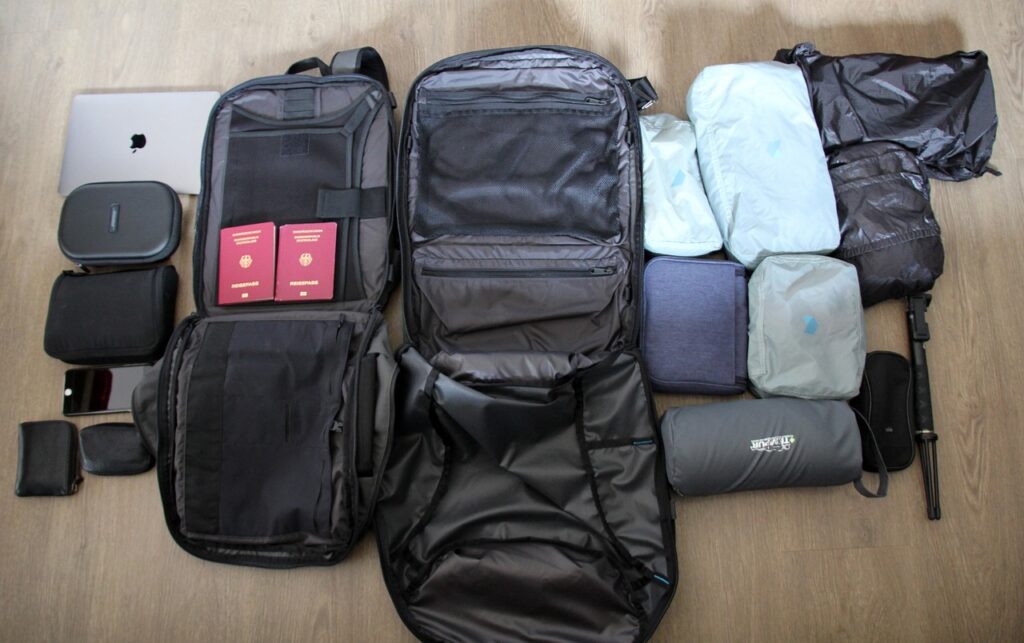Have you ever found yourself standing at the airport, wondering if your meticulously packed bag is just a tad too big? Navigating airline luggage rules can be a bit perplexing, but understanding these guidelines is essential to ensure a smooth travel experience. In a world of overhead bins and weight restrictions, knowing what the largest bag allowed on a plane is can save you stress and additional fees.

Understanding Airline Baggage Policies
Each airline has specific rules regarding the size and weight of carry-on and checked bags. These guidelines exist for several reasons, primarily for safety and convenience. Knowing the maximum sizes helps ensure that all passengers can store their belongings without causing inconvenience to others.
The Importance of Knowing Bag Restrictions
Understanding these restrictions is crucial for two main reasons: avoiding extra fees and ensuring your comfort during flights. Overweight or oversized bags could result in additional charges, which can be quite expensive. Furthermore, knowing the size limits ensures that your bag will fit in the overhead bin or under the seat in front of you, easing the boarding process.
Variations in Policy Across Airlines
Not all airlines follow the same rules. What’s considered acceptable for one airline might be too large for another. Therefore, it’s vital to check the specific policies of the carrier you’re flying with. Some airlines may have more stringent rules, while others might be more lenient, yet it all depends on their in-flight storage space capabilities.
Defining Carry-On and Checked Bag Sizes
The key to a hassle-free travel experience lies in understanding the difference between carry-on and checked luggage, along with their respective size limitations.
Carry-On Luggage Specifications
Carry-on bags are intended to be small enough to fit in the overhead compartment or under the seat in front of you. Typically, airlines allow one carry-on bag and one personal item, such as a purse or laptop bag.
Common Dimensions for Carry-On Bags
Most airlines adhere to a standard size for carry-ons:
| Dimension | Inches (Approx.) | Centimeters (Approx.) |
|---|---|---|
| Length | 22 | 56 |
| Width | 14 | 36 |
| Height | 9 | 23 |
These dimensions can slightly vary, and low-cost carriers may have stricter regulations or charge for carry-on luggage.
Weight Considerations for Carry-On Luggage
While size is typically a more stringent factor for carry-ons, weight can also be a consideration. A common weight limit is around 15-22 pounds (7-10 kg), although again, this can vary depending on the airline. Ensuring your bag is within these guidelines will help avoid unexpected charges at the gate.
Checked Luggage Specifications
Checked bags are generally larger but must still adhere to specific size and weight limits to avoid additional fees.
Common Dimensions for Checked Bags
Most airlines accept the following dimensions for checked baggage:
| Dimension | Inches (Approx.) | Centimeters (Approx.) |
|---|---|---|
| Length | 62 (combined L+W+H) | 158 (combined L+W+H) |
This means the total dimensions of length, width, and height should not exceed these measurements.
Weight Considerations for Checked Luggage
The standard weight limit for checked baggage is typically 50 pounds (23 kg). Exceeding this limit can lead to overweight bag fees, which vary by airline.
Factors Influencing Baggage Policy
Several factors influence an airline’s baggage policy, including aircraft type, flight duration, and pricing strategies, each contributing to how generous or restrictive their policies might be.
Aircraft Type and Size
The size of the aircraft can significantly affect baggage allowances. Larger aircraft used for international flights might have more space and looser baggage rules compared to smaller, regional aircraft.
Duration and Type of Flight
Long-haul international flights often allow larger or additional free checked bags compared to short domestic flights. This is due to increased storage capacity and the nature of extended travel, where passengers are likely to carry more belongings.
Strategic Pricing and Baggage Fees
Some airlines use baggage fees as a revenue source, especially budget carriers. This results in stricter size and weight limits for both carry-on and checked bags, allowing airlines to monetize any excesses.
Tips for Choosing the Right Luggage
Selecting the right bag can enhance your travel experience. Here are some aspects to consider when choosing luggage that meets airline standards and your personal needs.
Evaluate Your Travel Needs
Consider the length and purpose of your trip. For short trips or business travel, a well-organized carry-on might suffice. For extended vacations, a checked bag would be more suitable.
Opt for Lightweight Luggage
Choosing lightweight luggage can be beneficial as it allows you to maximize what you pack without worrying about weight limits. Look for materials such as polycarbonate or aluminum that offer durability with minimal weight.
Check for Expandable Features
Many suitcases come with expandable features that allow for additional packing space when needed. While this is convenient, ensure that expanding your suitcase does not push you over the airline’s size limitations.
Use Packing Aids
Packing cubes and compression bags can help organize your belongings and maximize space, ensuring your luggage maintains its shape and fits within dimension limits.

Things to Remember When Traveling with Luggage
Being prepared and informed goes a long way in ensuring a stress-free journey. Here are a few additional tips to keep in mind:
Know Your Airline’s Rules
Always check the specific size and weight policy of the airline you’re flying with before you pack. Policies can change, and staying informed helps avoid surprises.
Consider Seasonality and Destination
Travel destinations and seasons can influence what you pack. For instance, traveling during winter may require bulkier clothing, necessitating larger luggage. Always plan according to your destination’s climate.
Account for Souvenirs and Purchases
If you plan on shopping or bringing back souvenirs, leave some extra room in your suitcase or consider packing a foldable bag for additional space.
Use Digital Scales
Portable digital scales can be a lifesaver in ensuring that your bag meets weight restrictions before leaving home. They are a small investment that could save you from oversized luggage fees.
Navigate Through Exceptions and Special Allowances
Knowing about any exceptions or special allowances can enhance your travel experience, making it smoother and less of a hassle.
Exceptions for Sporting Equipments or Musical Instruments
Airlines typically have special policies for sporting equipment and musical instruments. These items often qualify for oversized bag allowances, but it’s crucial to verify the specific terms with your airline.
Shortcuts for Frequent Travelers
Frequent flyers may benefit from loyalty programs that provide additional allowances or priority boarding, where more generous space is available for carry-on and checked luggage.
Special Considerations for Different Regions
Traveling regulations can vary regionally. For instance, European budget carriers can be more stringent compared to US domestic flights. Therefore, always check local standards when flying internationally.
Final Thoughts
Understanding your airline’s baggage policies is more than just knowing the numbers. It’s about improving your travel experiences and preventing those last-minute scrambles at check-in or the boarding gate. Remember that being informed and prepared is key to a successful journey, and knowing what the largest bag allowed on a plane is, will always keep your travels light, organized, and, most importantly, enjoyable.

